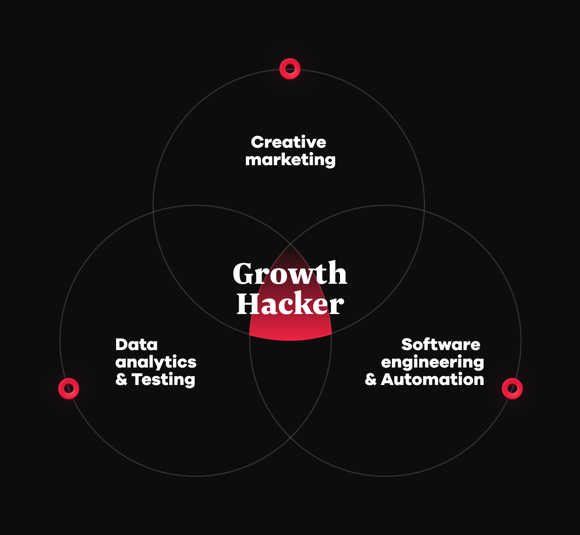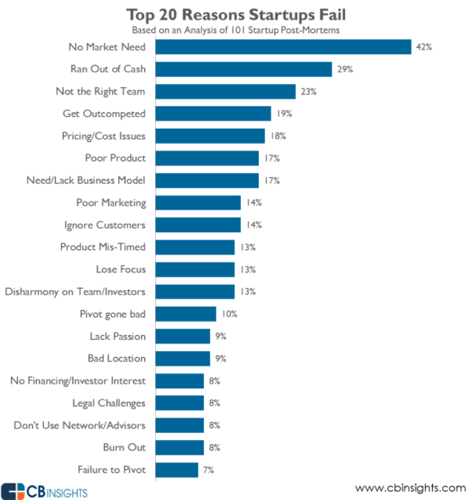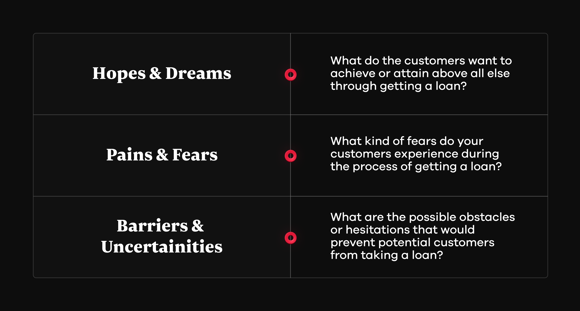Check out below the table of content, and jump right into the topics you are interested in!
What is Growth Hacking?
If you ask 10 people the question “what is growth hacking” you will probably get 10 different answers. There’s still too much misconception or confusion (and fear) around this term. But in fact, it’s very simple: growth hacking is a data-driven methodology and collection of smart marketing techniques. They are focused on reaching scalable growth of businesses.
It emerged out of the Silicon Valley startup scene. With limited marketing budgets, business owners had to come up with innovative new ways to grow their businesses quickly and at a minimal cost. The term “growth hacking” has been coined by Sean Ellis.
“A growth hacker is a person whose true north is growth.” - Sean Ellis
The formula for growth hacking success is based on continuous testing and optimizing. The goal is to document all the learnings you’ve collected during this process to apply to the next projects (so you don’t make the same mistakes again!). Thanks to this approach you can unlock your growth potential. And even though growth hacking might look a lot like marketing at first glance, there are some significant differences.
What makes someone a growth hacker?
Growth hackers trace their roots back to programming engineers. But they are much more than that. They are creative marketers, product managers, and data analysts as well. They are focused on a singular goal: finding the most effective and efficient way to grow a business. This often involves rapid experimentation across marketing channels, constant attention to product (re)development and an unending focus on building and engaging a company’s user base.
Most importantly, every decision a growth hacker makes is based on data. A growth hacker knows how and what to measure. They use analytics, landing pages, and A/B testing to understand their target customers’ habits and behavior. While they don’t make assumptions, they are instead obsessed with data, until they find the most effective solutions with the most potential for growth.

Graph of a growth hacker skill combination
Not yet sure how all these pieces fit together? Think about Dropbox’s amazing referral program, Airbnb’s reverse engineering of Craigslist API, and even Hotmail’s users becoming free advertising banners, so many great companies somehow used those hacks to reach growth. If you’re still not sure about what it means, check out our blog post about the most iconic growth hacking examples.
The world of growth hacking is constantly evolving as new hacks are discovered and methodologies are developed. Many larger companies have begun experimenting with the same techniques. Growth hacking is no longer just for startups. To support this statement and to show that almost every company can benefit from growth hacking we published some case studies of companies we have worked with. The good news for you is, that many of the growth hacking principles are simple, easy to understand and don’t require lots of technical knowledge. We’re going to teach them to you.
The 7 pillars of Growth hacking
Much of growth hacking comes down to systems and processes. It’s about finding the weakness in a system and exploiting it. It’s about the processes of continual ideation, prioritization, testing and analyzing.
"For a growth hacker, however, failures are progress. Failure is part of experimentation and the learning process."
Through our own experience helping clients grow, we developed (and are continually improving) a general methodology for achieving exponential growth. We call it the DotControl Growth Playbook, and it consists of 7 foundational pillars. We’re going to share it with you to give you a taste of our approach.

The DotControl skyrocket to growth
1. Achieving the growth mindset
Growth hacking starts with the right mindset. It involves focusing all your efforts on achieving your One Metric That Matters (OMTM). This is typically an ambitious and specific growth goal, for example, “to achieve 10 million in revenue by 2020.” It is very important that your OMTM is measurable, achievable and straightforward so you can always keep it in mind letting it guide your team’s every move.
As the person or team in charge of growth, all of your activities should be geared towards achieving your OMTM.
The growth mindset is also about challenging yourself and realizing that you are capable of far more than you give yourself credit for. Growth hackers think big, take risks and constantly ask the question “what if?” Relentlessly pursuing a goal, even when it takes you beyond your zone of comfort, is what makes growth hackers effective. “Impossible” is not part of a growth hacker's vocabulary.

Growth mindset versus fixed mindset
At DotControl we like to constantly remind each other to hustle. By this, we mean taking risks and trying things that would normally be outside our comfort zone. You never know if something will work or not until you try it. We even encourage each other to do silly things like randomly asking the Starbucks barista for a 10 percent discount… just to keep the mindset primed. It can’t hurt to ask, right? You’ll be surprised by how many doors will open for you. Some of our greatest achievements have resulted from practicing this attitude.
Hustling is about having the courage to reach out for what others might think to be unattainable.
2. Building a growth team
Growth hackers’ skill sets are in a T-shape where the horizontal bar represents the breadth of knowledge and the vertical bar represents deep knowledge. No single person can be an expert in every area, which is why having a solid team is so important. The typical member of a growth team will have knowledge about a broad range of topics while specialising in one or two key areas.

The T-shape knowledge
Building a growth hacking team with the following combination of skills is necessary: 1) creative marketing, 2) software programming & automation, and 3) data analysis & testing. It’s fundamental they can understand and leverage each other’s strengths.
Standard Operating Procedures
At DotControl we take lots of inspiration from the U.S. Navy SEALS. One of the SEAL principles we practice that gives us a cutting edge is standard operating procedures (SOPs). SOPs enable you to standardize common processes for an entire team, allowing things to get done more quickly, consistently, and with less energy. The discipline of developing and using SOPs will help to remove the thought process behind common activities, freeing up your team’s time and mental energy.
We actually think it allows you to be more creative. Systems and processes save you energy and time on mundane tasks so that you can focus your cognitive energy elsewhere. This is not only good business practice but a powerful life tool.
“The mind is for having ideas, not holding them.” - David Allen
3. Measurement, how, and what?
As you and your amazing new growth team pursue your OMTM, everything you do to speed up growth should be measurable. If you’re achieving results, great! If not, stop and move on to the next idea.

As the saying goes, “When you assume, you make…”, the quote growth hackers live by. As there is no room for assumptions, all decisions should be based on data. And in order to have that data, you need to start measuring.
Many traditional marketers or small business owners wouldn’t be able to say what the ROI was on their most recent ad campaign, likely because they don’t know what to measure or they just don’t have the right measurement tools to do so. Knowing what and how to measure can be challenging, but it is so essential.
If you succeed in reaching some target, but you didn’t measure everything you did, you don’t know what it was that led to success. Conversely, if you fail at something, without measurement you won’t be able to avoid the same mistake next time.
Data collection and analysis is the optimum way to know what exactly correlates with success. It gives you a baseline to which you compare your performances as you experiment.
Luckily, technology has made it possible to track almost everything you do. Here are just a few of the online measurement tools we use to help businesses track and improve their performance.
These tools will give you rich information about how users interact with your websites and apps. Where do they get stuck? Where are they clicking? What makes them leave? Once you understand your customer’s journey, you can begin to formulate hypotheses and start experimenting.
4. How to Listen to Your Market
The #1 reason why startups fail is that they try to sell a product that nobody wants. Here’s a news flash: Just because you think you have an amazing product, doesn’t mean that there is a market for it. Accepting this reality early on will save you lots of trouble, time, money, and energy.

How to avoid it then? The only way is to carefully listen to your market by doing market research first and tailor your product to what is needed there. Create a customer desire map. Research your potential customers as thoroughly as you can until you know what makes them tick. You should aim at discovering 3 deep feelings of customers towards a product, here are the feelings to look for:

Example of a customer desire map
The goal with all of this is to know your customers better than they know themselves. Of course, you can use surveys, focus groups, interviews and other traditional market research tactics to find this information, but consider some other options as well. Where does your potential customer segment congregate and how can you tap into what they are saying?
Amazon book reviews, for example, often contain a wealth of information about what your customers are thinking and feeling. Try looking at the reviews of some of the best-selling books related to your subject or business and see what people are saying. Look at Q&A sites like Quora and Reddit. We call this forum mining.
5. The Elusive Product-Market Fit (P.M.F)
Using the results from your market research, you can now determine if you have a product-market fit (PMF). This is about finding ways to remove the barriers and uncertainties your customers might have about your product or service. It’s about offering them a product they cannot live without.

Take a minute to think about some products that you would be devastated if you could no longer use.
In most traditional companies, product development teams are separate from the marketing teams. The product developers build the product and the marketer's job is to sell it. One of the reasons growth hackers are so successful at helping companies grow is that they don’t live within these boundaries.
When you are working towards your OMTM, all options need to be on the table, including the willingness to take your product back to the drawing board and make adjustments based on your continual process of market research, measurement, and testing. Based on experimentation and constant iteration, you should tailor your product to your customers.
The rule of thumb is: When at least 40% of your users report that they would be very disappointed if they could no longer use your product or service, you probably have a PMF. Sean Ellis found this out after working with more than 100 startups. Those who had more than 40% PMF were able to achieve traction and growth. Those that didn’t, constantly struggled to stay afloat.
PMF is vital to achieving growth. If you don’t have a product-market fit, your marketing efforts are going to be wasted as you try to push a product nobody wants. When you have a PMF, people will be so satisfied with your product that they will become your salespeople as they share it with their friends.
Product-Market Fit is about building growth into your product or service so that it sells itself.
6. Use the right Traction Channels
If you are handing over bags of money for ads on Google and Facebook without any idea as to your ROI, it is time to rethink your approach. It’s not that Google Ads and Facebook advertising are not useful - on the contrary! But they are not the only traction channels. And they might not be the best channels for your situation at this point in time.
So, how can you best reach and interact with your (potential) customers?
There are actually 19 different marketing channels you could (and should) exploit to grow your business. You definitely don’t want to use all of them simultaneously. Figure out what the right combination is for your business at this moment in time.
Remember, it is not about the size of your reach, it is about its effectiveness. In the end, it doesn’t matter how many people have heard of you. What matters is that the right people know about you: the people with the highest potential to become loyal customers.
Overview of the 19 traction channels
|
|
Each of the traction channels deserves its own blog post (we will try to do that in the future). But for now, it is enough that you are at least aware of them. One of the biggest pitfalls is that people tend to only utilise what they are familiar with. By doing this, you may be missing out on big opportunities. You can never know exactly what your market is going to do, or what channels are going to work best. Instead experiment, measure and test!
In order to find the right traction channels for you to pursue, spend some time thinking with your team. Remember, it is not about the size of your reach, it is about its effectiveness. Find the top 3 options, start optimising these, and go through this process regularly – they are likely to change over time.
The three categories:
- Promising
- Potential
- Long-shots
7. The Key to Optimisation
By now you have embraced the growth mindset, put together a stellar team with a broad set of skills, you have understood the importance of measurement, you have begun listening to your market, you have developed a product people can’t live without, and you’ve identified the most promising traction channels. So now what?
What do you do to achieve exponential growth?
The key to growth hacking is to test, test, and keep testing! Using your research and measurement techniques, you should continually search for ways to optimise. This requires a systematic approach in which you develop hypotheses and then test them. Hypotheses need to be simple, clear, relevant to your goals and based on data. Like this:
- Because we saw [data/feedback]
- We expect that [change] will cause [impact]
- We’ll measure this using [data metric]
But where should you start? The Lift Model® Developed by Chris Goward is one guide you can use to ensure you cover many of the most important aspects of your business. It consists of 6 essential elements that you should constantly monitor, measure, tweak and optimise.

Lift Model by Chris Goward
Value: Are you communicating the benefits of what you are offering with crystal clarity?
Relevance: Are the design elements on your site motivating and stimulating the desired action?
Clarity: Is the content on your site as clear as possible? Are users getting lost and confused?
Distraction: Are there design elements on your site that prevent or distract users from taking the desired actions?
Anxiety: Are you credible? What is causing uncertainty or doubt on your website?
Urgency: How can you add a sense of urgency for people to take action?
So, these are the 7 pillars of the proven DotControl Growth methodology. Start to use them – we can’t promise you will be the next Airbnb, but we can ensure that you will see results quickly. We know because we have helped lots of companies accomplish exponential growth; just check out some of our success stories.
DotControl’s Mission
DotControl was the first growth hacking agency in the Netherlands. We were already running our own highly successful digital agency - a team of software engineers that could build just about anything.
But we noticed that having a stellar new website or app didn’t necessarily translate into traction and growth. And so, we began thinking about how we could help clients not only with their platforms but with setting up a system for growth as well.
At the same time, the Silicon Valley growth hacking trend was getting bigger, and we took inspiration from the systems approach they advocated.
The DotControl mission is all about growth hacking implementation and education. We do the hard work of implementation for you. But we also believe that training your teams is an essential part of setting up your business for sustainable growth.
Let's start growth hacking!
Hopefully, you have a pretty clear understanding now of what growth hacking is all about. It is for all types of businesses (and individuals) looking to accelerate their growth - whether it be in terms of revenue, customer base, or anything else. It’s about understanding systems and processes and learning to exploit and craft those systems to do what you want.
It is about having a ‘hustle’ mindset in which all of your team’s focus and energy go into achieving your one metric that matters (OMTM). It’s about constant measurement, testing, experimenting, and optimizing. It’s about listening closely to your market, achieving product-market fit (PMF), and then finding the traction channels best suited for your situation.
